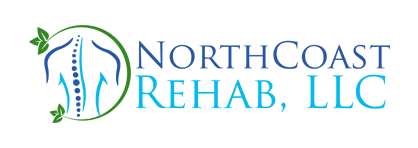What’s cold laser therapy?
Cold laser therapy is low-intensity laser therapy that stimulates healing while using low levels of light.
The technique is called “cold” laser therapy because the low levels of light aren’t enough to heat your body’s tissue. The level of light is low when compared to other forms of laser therapy, such as those used to destroy tumors and coagulate tissue.
Surgical and aesthetic lasers heat the tissue being treated. True to its name, cold laser therapy does not.
Cold laser therapy is also known as:
- low-level laser therapy (LLLT)
- low-power laser therapy (LPLT)
- soft laser biostimulation
- photobiomodulation
How does cold laser therapy work?
During this procedure, different wavelengths and outputs of low-level light are applied directly to a targeted area. The body tissue then absorbs the light. The red and near-infrared light cause a reaction, and the damaged cells respond with a physiological reaction that promotes regeneration.
Superficial tissue is commonly treated with wavelengths between 600 and 700 nanometers (nm). For deeper penetration, wavelengths between 780 and 950 nm are used.
Although you’ll feel the laser device touching your skin, the procedure is painless and noninvasive. There will be no sound and you’ll feel no vibration or heat. Each treatment typically takes only a few minutes.
What’s cold laser therapy used for?
Doctors, dentists, physical therapists, and other medical professionals use cold laser therapy in a variety of ways. The main uses for cold laser therapy are tissue repair and relief from pain and inflammation.
Minor injuries and sprains
Sports medicine and physical therapy practices often use cold laser therapy in the treatment of minor injuries and sprains, such as:
- ligament sprains
- muscle strains
- tendonitis
- bursitis
- tennis elbow
- neck pain
- lower back pain
- knee pain
- pain associated with muscle spasms
It’s also used to help reduce swelling and promote healing of the joints and soft tissue.
Inflammation
Dentists use cold lasers to treat inflamed tissues in the mouth and to heal ulcerations. Doctors use it to treat inflammation caused by rheumatoid arthritis (RA) and other chronic autoimmune diseases.
Aches and pains
Pain clinics use cold laser therapy to help people with acute or chronic pain from conditions such as fibromyalgia and carpal tunnel syndrome.
Skin rejuvenation
Cold laser therapy is used to encourage skin rejuvenation. Dermatologists use it to treat various skin problems, including:
- acne and acne scars
- psoriasis
- burns
- vitiligo
- edema, or swelling of the skin
- dermatitis and rashes
Wound healing
Cold laser therapy is also used to treat difficult-to-heal wounds, including wounds related to diabetes.
Acupuncture
Acupuncturists use cold laser therapy for clients who are uncomfortable with needles. The low-level laser beams can stimulate your acupoints the same way needles do, but without piercing your skin.
Future uses
The potential for new applications for cold laser therapy is virtually limitless. Researchers are studying its use in hopes that it can help treat a variety of ailments and conditions, including:
Is cold laser therapy for you?
The use of cold laser therapy is growing in traditional medical practice and as a complementary or alternative therapy. It’s approved by the U.S. Food and Drug Administration (FDA) for a number of conditions.
Cold laser therapy is considered safe when performed under the care of a doctor or qualified practitioner. On the plus side, it’s also noninvasive and painless. It doesn’t require medication or other preparation either.
That being said, cold laser therapy shouldn’t be used on carcinomas or cancerous lesions. It should also be avoided on the thyroid or eyes for home use. Since the effect of cold laser therapy on unborn children is unknown, it’s suggested that pregnant women avoid this type of treatment.
One of the drawbacks of this therapy may be time. While each cold laser therapy session only takes a few minutes, it may take as long as a month (with as many as four treatments a week) before you can gauge its effectiveness.
It also may not be covered by your insurance.


